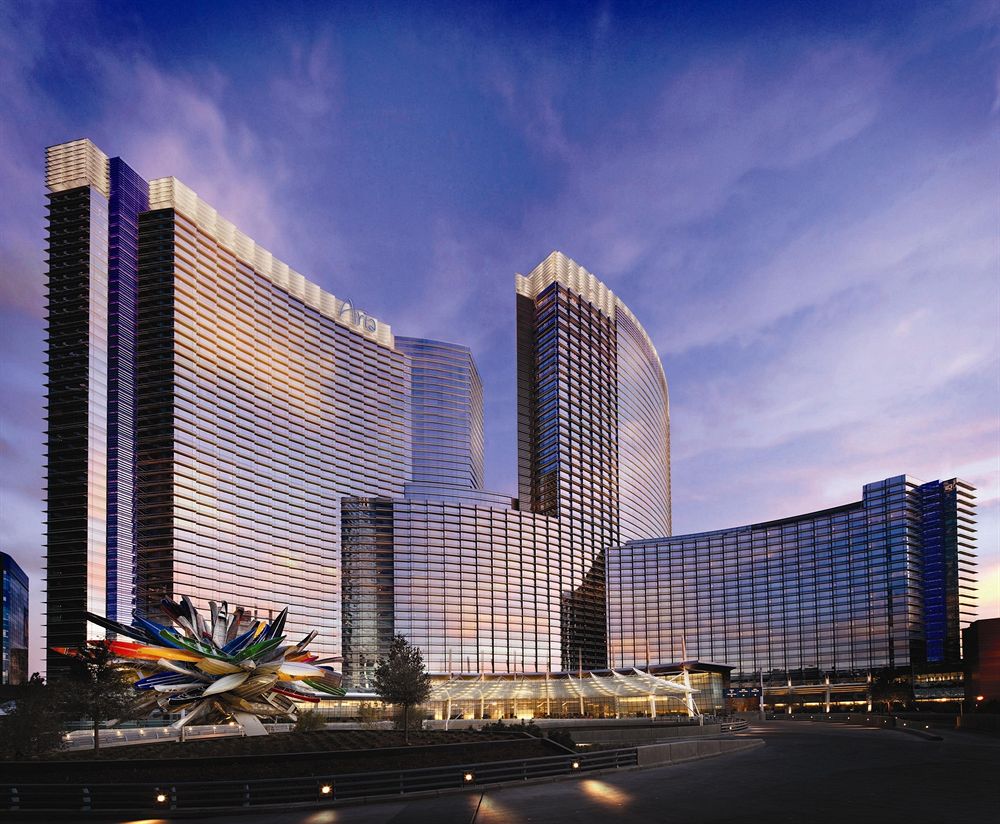Steering the Ship of a 7,500-plus Crew
For a luxury-seeking hotelier such as myself who is used to working with and reviewing properties of 200 rooms or less, tackling ARIA Resort & Casino in Las Vegas is a somewhat daunting task. Hoteliers will confide that consistently delivering 5-diamond and 5-star services for a typical 200-350 room property with a few restaurants, a pool, spa and other amenities is already a complex task. Now imagine the responsibilities for a 4 million-square-foot property: 4,000-plus rooms; 300,000 square feet convention center; 215,000-square-foot pool area; 80,000-square-foot spa; 1,800 seat theater; 26 restaurants and bars; and not to mention a 150,000-square-foot casino.
Each casino on The Strip requires an army to move operations forward. For ARIA, all of this rests squarely on the shoulders of Paul Berry, VP of hotel operations. I sat down with him for a brief conversation one early Friday morning in the Lobby Bar to talk about the property and how it manages to maintain its stellar reputation.
I must admit that at first I was quite intimidated. After all, this was in effect the captain of a 7,500-plus employee crew. Paul’s calmness and warm, open demeanor were reassuring. He acts and responds to questions as if he were managing a small countryside inn. His knowledge and understanding of his product reflect an unswerving commitment to the guest and assessing the hospitality experience from the consumer’s perspective. And that is where we begin.
Mogelonsky: How do you manage to keep the “wheels” on a hospitality business of this scope?
Berry: “We call it developing a culture of excellence—a circle, really—whereby every operational department is interrelated with the next. There are no silos. Each department and each team member understands that the decisions they make will influence the guest and the customer’s decision as to whether they stay with us again.”
Mogelonsky: An example?
Berry: “This may seem odd for a traditional hotel. We see revenue management not as an accounting or yield function but a part of our customer service department. The work that they do sets the hotel up for success. For instance, it is not unusual to see members of our revenue-management team working alongside our front-desk personnel, learning and understanding the implications of rate decisions.”
Mogelonsky: So this reduces rate?
Berry: “On the contrary, it is designed to provide tangibility to the work of the revenue team. We look at each individual day on the calendar as a single event. The goal is to get to 100%, or as close to it as possible, with zero walks. As a 5-star property, walking a guest to another property, even a sister property, is unacceptable from the standpoint of customer service. By ensuring that revenue managers fully appreciate guest interactions, they can more closely understand the implications of rate activities.”
Mogelonsky: You say 100% occupancy every day. How do you achieve this?
Berry: “Well, that’s the goal. Some days we don’t quite reach that number, but we come pretty close. We look at four core segments: convention, casino, (frequent independent travelers) and package. Based upon trended data and a balancing approach, we adjust rates within each segment to build overall revenue for the property. You see, it’s not just the achievement of a full house, but rather optimizing the market mix to deliver (revenue-per-occupied-room) maximization. Last year, we did 1.4 million roomnights of occupancy. A small tweak in the mix can mean a several million-dollar improvement to the bottom line.”
Mogelonsky: Was it always this way?
Berry: “We officially opened in December 2009. I have to admit that the first few months were challenging. You may recall that 2009-10 was not a banner year in hospitality. Business travel was heavily curtailed; meetings and convention activity was in the cellar. Yet, we saw this as an opportunity to deliver the personalized service of a smaller property at an unheard of scale. Now going on over four years, we have mastered this fine art and continue to work at refining this sense of responsibility to customer satisfaction.”
Mogelonsky: Just the technology of this hotel amazes me.
Berry: “You have to look at technology as an important tool for guest service enhancement. Our guestrooms have some interesting advantages insofar as automation. But, if the guest does not understand how to turn on the lights, open the drapes or change the TV channels without a guidebook then we’ve failed in our role in customer service delivery. It all comes down to catering to our guest.”
Mogelonsky: You mentioned the term “365 stories.” What do you mean?
Berry: “Every year, each day presents a new and unique challenge to our team. We have 4,004 rooms to fill. We have to maximize revenue in our casino, convention center, restaurants and theater. That day, be it a Sunday or Wednesday has certain differences based upon natural schedules (midweek or weekend), seasonality, citywide activities and other long-term planning factors. Nonetheless, our goal is a full and happy house each and every day.”
Mogelonsky: How do you hire staff that matches your commitment?
Berry: “It really comes down to examining attitude and aptitude. Aptitude we can train. But attitude is something that comes from within. If an individual is happy with life, smiling and caring, we’ll nurture the rest. After all, we’re in the business of making smiles 365 days a year.”
(Note: The author of this article stayed at ARIA but paid for his room as well as all food and beverage. There were no complimentary services received.)
(Article published by Larry Mogelonsky on Hotel News Now on May 30, 2013)




